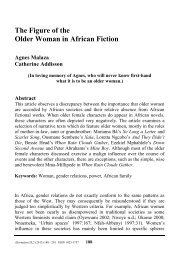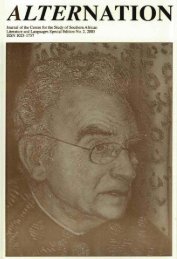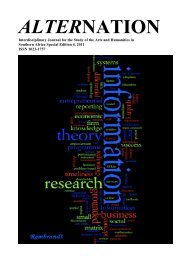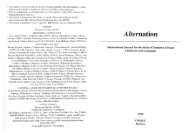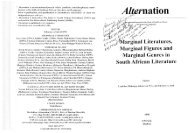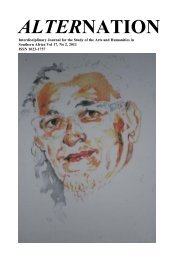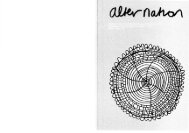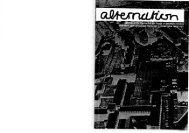Re-reading The Purloined Letter - Alternation Journal
Re-reading The Purloined Letter - Alternation Journal
Re-reading The Purloined Letter - Alternation Journal
You also want an ePaper? Increase the reach of your titles
YUMPU automatically turns print PDFs into web optimized ePapers that Google loves.
Pravina Pillay<br />
a remainder whose importance no analyst will fail to recognize.<br />
Schneiderman (1991:153) states that there are now two letters of which only<br />
one is a signifier and which are thus certainly not doubles. <strong>The</strong> second letter,<br />
the facsimile, is the object ‘a’ and its connection with the original letter as<br />
barred signifier constitutes the structure of a phantasy. Schneiderman<br />
(1991:153) believes that Lacan’s fiction was generated out of the phantasy<br />
he read in the text.<br />
Catherine Clement (1983:190f) states that Poe emphasizes certain<br />
details that could not fail to arouse Lacan’s interest: the Minister is a poet, a<br />
madman, and a mathematician, and an author of a book on differential and<br />
integral calculus. <strong>The</strong> fantastic combination of attributes drew Lacan’s<br />
attention to questions of inspiration, madness and the matheme. Clement<br />
(1983:190) believes that Lacan analyses <strong>The</strong> <strong>Purloined</strong> <strong>Letter</strong> from the<br />
Minister’s point of view, fascinated by the man behind the Minister—a<br />
thief—and by his relationship to the woman. She is not just any woman, she<br />
is the Queen. This changes the nature of the story: she becomes a possession.<br />
By absconding with the Queen’s letter, the Minister takes possession of the<br />
sign of the woman and is himself possessed by it: it is ‘in his possession’.<br />
We see him hide the letter by adopting a stratagem similar to a trick an<br />
animal might use to escape from a predator. Lacan sees this as a device used<br />
by the ostrich—an animal that hides its head in the sand, believing that it<br />
would not be seen because it can’t see anything. <strong>The</strong> Minister’s dependency<br />
is absolute: he is in possession of the letter, but he does nothing with it<br />
beyond hiding it by placing it in an obvious location. <strong>The</strong> Minister,<br />
according to Clement (1983:191) becomes a woman. He gives off the most<br />
obvious ‘odor di femmina’. He turns the envelope inside out as one turns the<br />
skin of a rabbit and writes—or has someone else write his own address in<br />
place of the Queen’s. So we have a Minister who writes a woman’s letter to<br />
himself—whatever the real contents of the stolen letter may be. <strong>The</strong><br />
<strong>Purloined</strong> <strong>Letter</strong>, like an immense female body, is displayed in the<br />
Minister’s office when Dupin enters. Dupin already expects to find the letter<br />
here, but through eyes shaded by green glasses he now has to only undress<br />
this immense female body. <strong>The</strong> Minister has been castrated by Dupin, who<br />
occupies a place analogous to that of the psychoanalyst. From a neutral<br />
position he observes the strategies of one who thinks that he is not being<br />
observed but who is in fact, like the ostrich, standing with his behind in the<br />
380



